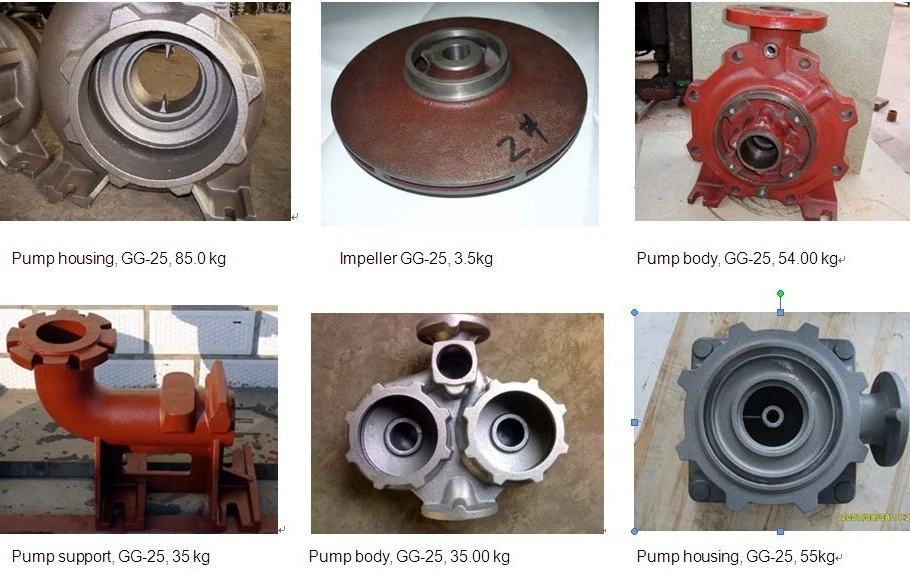Mobile:+86-311-808-126-83
Email:info@ydcastings.com
Understanding Casting Techniques and Their Importance in Modern Manufacturing Processes
Casting in Manufacturing Process An Overview
Casting is one of the oldest manufacturing processes known to humanity, dating back thousands of years. It involves the pouring of liquid material into a mold, where it solidifies into the desired shape. This process is a cornerstone in the production of various metal components and has found applications in many industries, including automotive, aerospace, art, and construction.
The Casting Process
The casting process can be broken down into several key steps
1. Pattern Making The first step in the casting process is creating a pattern, which is a replica of the final product. Patterns can be made from various materials, such as wood, metal, or plastic, and can be produced using traditional methods or advanced techniques like 3D printing.
2. Mold Creation After the pattern is complete, a mold is made to house the liquid material. Molds can be disposable, such as sand molds, or permanent, made from metal for repeated use. The choice of mold type depends on the production volume and the complexity of the part being cast.
3. Melting and Pouring Once the mold is prepared, the metal to be cast is melted in a furnace. This can involve various metals, like aluminum, bronze, iron, or steel, each having unique properties and applications. Once the metal reaches the desired temperature, it is poured into the mold.
4. Cooling and Solidification After pouring, the liquid metal begins to cool and solidify. This phase is crucial as it determines the microstructure and properties of the final product. The cooling rate can influence the mechanical properties of the cast component.
5. Finishing Once the metal has completely solidified, the mold is removed, and the casting is cleaned and finished. This may involve machining, grinding, or surface treatments to achieve the required specifications and surface finish.
casting in manufacturing process

Advantages of Casting
Casting offers several advantages over other manufacturing processes. Firstly, it allows for complex geometries that are often difficult or impossible to achieve with machining or forging. This flexibility makes casting ideal for intricate designs, such as engine blocks or decorative items.
Secondly, casting is suitable for mass production. Once a mold is made, multiple parts can be produced quickly and efficiently, reducing manufacturing time and costs. This scalability is particularly beneficial in industries where large quantities of parts are required.
Moreover, casting can utilize a variety of materials, which can be selected based on the specific requirements of the application. Whether lightweight aluminum for automotive components or robust iron for infrastructure, casting allows manufacturers to choose materials that best suit their design needs.
Challenges in Casting
Despite its many advantages, casting is not without challenges. The initial investment for mold design and manufacturing can be significant, especially for complex parts. Moreover, variations in cooling rates can lead to defects such as warping or porosity, which can compromise the integrity of the final product.
Additionally, the quality of the casting is heavily influenced by the skill and experience of the operators involved in the process. Quality control measures must be in place to ensure that all parts meet the required specifications.
Conclusion
Casting remains a vital manufacturing process, integral to modern production techniques. Its ability to produce complex shapes, combined with cost-effectiveness and material versatility, ensures that casting will continue to play a significant role in manufacturing for years to come. As technology advances, so too will the methods employed in casting, likely leading to even greater efficiencies and innovative applications in various sectors. Understanding the casting process and its implications is essential for any manufacturer looking to harness its potential in creating high-quality components.
-
Why Should You Invest in Superior Pump Castings for Your Equipment?NewsJun.09,2025
-
Unlock Performance Potential with Stainless Impellers and Aluminum End CapsNewsJun.09,2025
-
Revolutionize Your Machinery with Superior Cast Iron and Aluminum ComponentsNewsJun.09,2025
-
Revolutionize Fluid Dynamics with Premium Pump ComponentsNewsJun.09,2025
-
Optimizing Industrial Systems with Essential Valve ComponentsNewsJun.09,2025
-
Elevate Grid Efficiency with High-Precision Power CastingsNewsJun.09,2025











